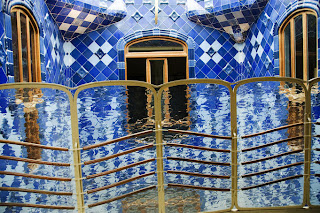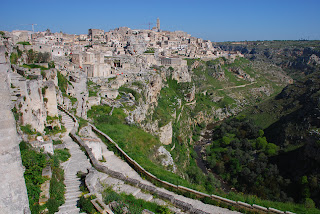 |
| La Sagrada Familia, image off of Google |
"We are in Barcelona and loving it. We had a terrible trip here though. We got to Milan and found out there was no night train so we took a train to Genoa to see if there was a night ferry, there wasn't so we took a train to the border and arrived at 1:30 am. We tried to sleep on the cold floor with some homeless people until a train left to Nice at 5:45. We had to take regional trains all the way to barcelona and the whole trip from Greece was two nights with almost no sleep. 1 bus, 2 taxis, 1 ferry, 10 trains, 2 subways and 59 hours. But we're good now. Gaudi is amazing. We're headed to Balaguer in a couple hours to meet up with a guy that has a farm with medicinal herbs. We'll be there for a few days and then headed to Morocco next week. Love you guys. -Ryan"
Journal excerpt on Feb. 27th,
 |
| Inside La Sagrada Familia |
La Sagrada Familia. Oh, La Sagrada Familia, words and photos shame the actual experience. I saw a picture of it in an old art history text book that said it would be finished in 2012. I told myself that I must be in Barcelona in 2012 and here I am. But it is not finished yet. The largest towers have not been completed.
 |
| Parc Gruell (Google) |
It is the only tourist and artistic experience that had so much hype that didn´t underwhelm me, but greatly exceeded my expectations. The outside is marvellous, but the inside was... I cannot describe how I felt. My heart hurt and I wanted to melt into the floor (despite the cold) and live there looking up into it forever. Maybe the heart ache was knowing that I would have to leave by the end of the day.
Traveling for 60 hours hurt my neck and so I cursed my physical body that kept me from looking up for too long, much less emotionally soaring up the canopy of tree-like columns.
 |
| Parc Gruell (Google) |
One of the rooms has diagrams of how Gaudi was inspired mathematically, ergonomically, and thematically inspired by nature. The first thing I knew about Gaudi the man was that he was born with poor health and did not play with the other kids. Rather, he spent much time with his mother observing nature. I put my hand on my chest and whispered, "Be still my heart" or whatever the idiom is...
The exhibition made me want to burst out of there and yell, scream, cry, laugh, throw things, and go make art and sit in there to stare all at the same time for the rest of my life. Everything all the time. Such a beautiful place- all his designs are geometrically inspired by observing nature, in his words, "that great book of Nature".
 |
| Casa Batllo (Google) |
Gaudi´s Parc Gruell is a park with mosaics everywhere. Naturally, it made me want to make mosaics and build things so badly. I must experiment with building materials. I was struck again by how mundane it is to make flat paintings to go in a room that few care to look at. But to design an entire space! To build things! Isn´t that what makes us human?
The final building we saw was Casa Batllo. Gaudi invented innovative ways of distributing light and heat throughout the building which includes an entire light well through the middle of the building. Everything seems to be inspired by marine life and the ocean in this building. Such a brilliant architect, I can´t believe that his style and genius has not been more widespread that I did not grow up knowing the name Gaudi...
 |
| The lightwell in the Casa Batllo |





